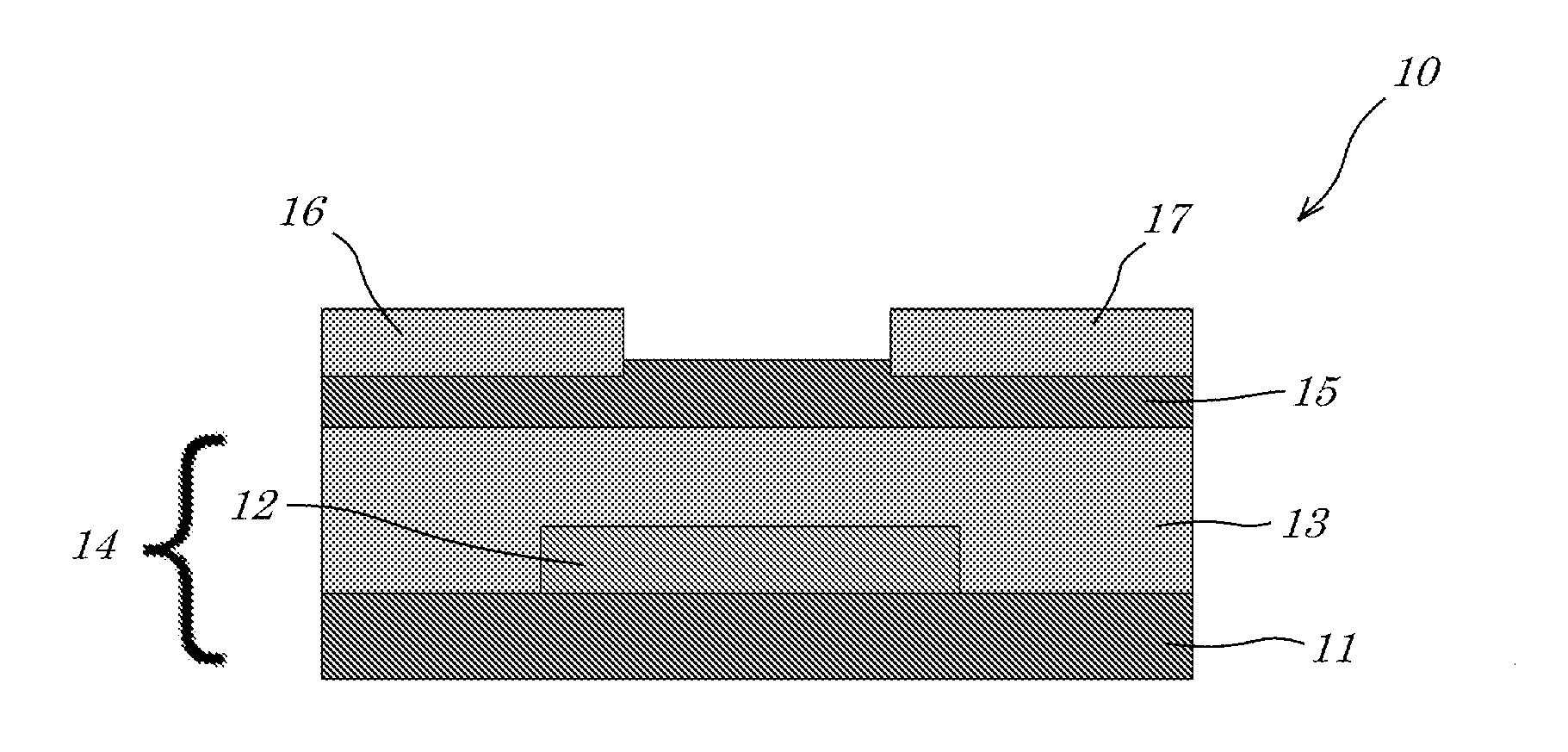Method for the deposition of an organic material
a technology of organic materials and methods, applied in the direction of diketopyrrolopyrrole dyes, naphthalimide/phthalimide dyes, thermoelectric devices, etc., can solve the problems of increasing production times, increasing costs, and increasing costs on an industrial scal
- Summary
- Abstract
- Description
- Claims
- Application Information
AI Technical Summary
Benefits of technology
Problems solved by technology
Method used
Image
Examples
example 1
Preparation and Optical Characterization of an Organic Field-Effect Transistor (OFET)
[0348]An organic field-effect transistor (OFET) is a typical example of an organic electronic device where certain components of prior art inorganic semiconductor technology have been replaced by organic materials. In the case of an OFET, the channel of a conventional field effect transistor is made from a thin organic semiconducting layer. The thickness the organic semiconducting layer is typically below one micrometer. OFETs have been fabricated with various device geometries.
Preparation
[0349]A typical example is depicted in FIG. 1 where the OFET 10 comprises a silicon wafer 11 which has been provided with metal gate electrodes 12 deposited via conventional high-vacuum physical vapor deposition techniques onto the surface of the bulk silicon 11. Subsequently an insulating dielectric layer 13 of thermally oxidized silicon has been grown. In the present case the dielectric layer 13 has a thickness o...
example 2
Preparation and Electrical Characterization of Another OFET Device
[0356]An OFET was prepared and optically characterized in accordance with Example 1 but using a different organic semiconducting material, having the following structure (B):
[0357]OFETs produced in accordance with Example 2 had a channel width (W) of 200 μm and channel length (L) of 100 μm and have been electrically characterized using an Agilent 4145C Semiconductor Parameter Analyzer.
[0358]The measurement results are depicted in FIGS. 3 and 4, respectively.
[0359]FIG. 3 shows the output characteristics with UDS=0 V to +60V at 2V step size with UGS=15, 30, 45 and 60V.
[0360]FIG. 4 shows the transfer characteristics with UGS=−20 V to +60 V at 2V step size with UDS=40V
[0361]The mobility μ is calculated from the root representation of the transfer characteristic curve (reference numeral 24 in FIG. 4) calculated in the saturation region. The slope m is determined from the dashed line 25. The dashed line 25 is fitted to a re...
example 3
Electrical Characterization of an OFET Array
[0364]An organic layer of compound (B) is deposited on a wafer substrate comprising an array of 180 OFETs using the method of the present invention. In this example, the substrate is not only placed at a short distance above the heated source into the rising vapor stream but moved with constant velocity through the vapor by means of a doctor blade drawing table. This method allows to produce a very uniform and homogenous coating over a large area of the substrate surface (complete coverage of the substrate with an organic semiconducting layer having a uniform thickness). In the present example, 180 OFTs were coated and individually contacted to determine their electrical characteristics.
[0365]The measurements reveal a very good homogeneity of the transistors with nearly identical transfer characteristics. FIG. 5 is a diagram showing the transfer characteristics of the array of OFETs. Almost the same transfer characteristics is obtained for...
PUM
| Property | Measurement | Unit |
|---|---|---|
| pressure | aaaaa | aaaaa |
| pressure | aaaaa | aaaaa |
| pressure | aaaaa | aaaaa |
Abstract
Description
Claims
Application Information
 Login to View More
Login to View More - R&D
- Intellectual Property
- Life Sciences
- Materials
- Tech Scout
- Unparalleled Data Quality
- Higher Quality Content
- 60% Fewer Hallucinations
Browse by: Latest US Patents, China's latest patents, Technical Efficacy Thesaurus, Application Domain, Technology Topic, Popular Technical Reports.
© 2025 PatSnap. All rights reserved.Legal|Privacy policy|Modern Slavery Act Transparency Statement|Sitemap|About US| Contact US: help@patsnap.com



